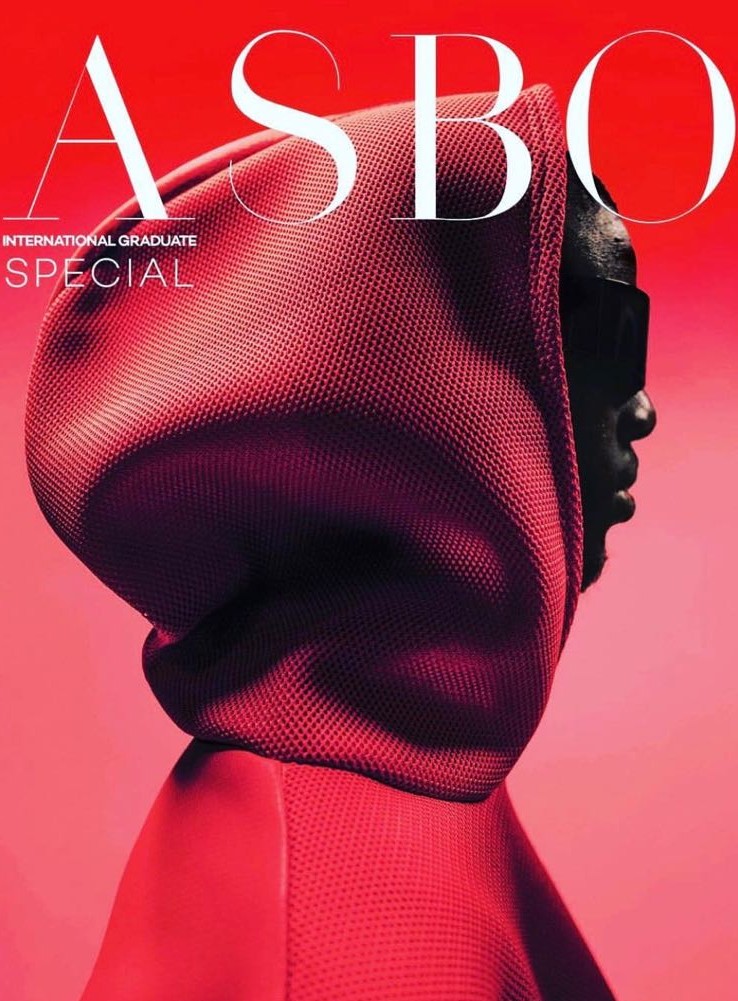W: YULIA IVANOV. I: LYA NODIA
This is a collection for refugees, created with the sincere wish to help them feel better in the awful circumstances they’ve been thrust into.
BRITISH HIGHER SCHOOL OF ART & DESIGN RUSSIA. COLLECTION BY YULIA IVANOV.
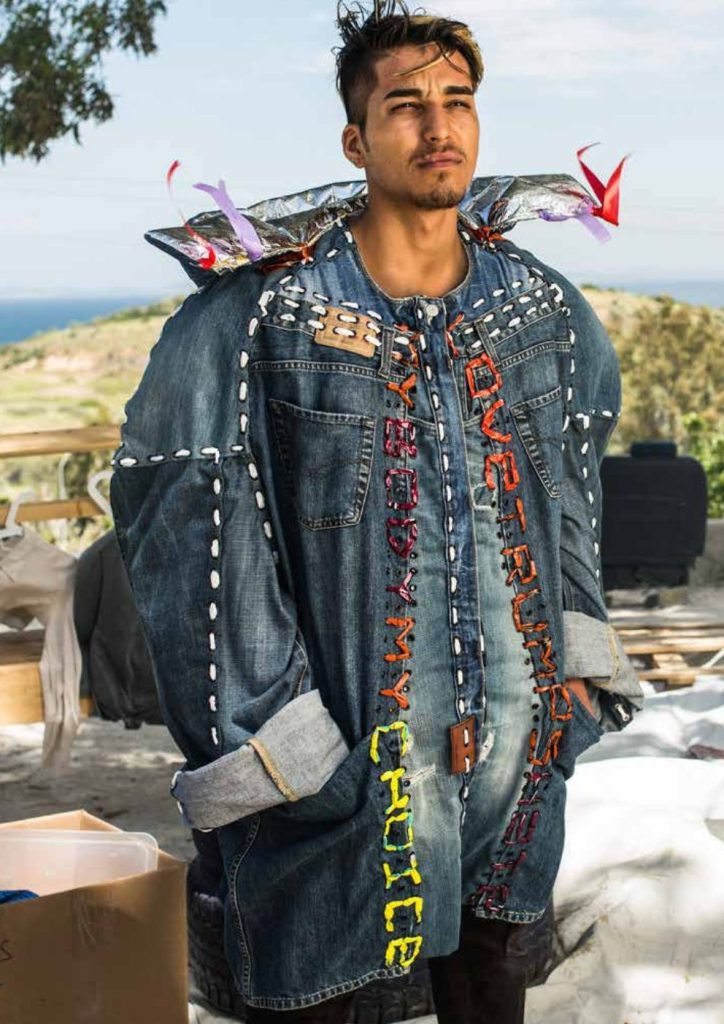
Empathy is the capacity to understand or feel what another person is experiencing from within
the other being’s frame of reference, i.e., the capacity to place oneself in another’s position. Empathy is seeing with the eyes of another, listening with the ears of another, and feeling
emotions with the heart of another.
This is a collection for refugees, created with
the sincere wish to help them feel better in the
awful circumstances they’ve been thrust into. The
purpose of the collection is to make people feel
special and help return their identities. All garments
can be personalised by the person that will wear
them. The key detail is a specially invented seam,
constructed by embroidering words one wants to
wear on their body. The words will hold the garments together in the same way as they will hold people relationships.
Everything is created consulting volunteers and
camps, without the need for special equipment, and
all materials used are upcycled and sourced from
camps, or areas in the near vicinity. The collection
will be delivered into refugee camps in the form
of construction kits, including instructions and
supporting tools like eyelets, seam rippers, etc.
The modern world is extremely scary. There are wars, climate change, financial crises, and new diseases. In
many respects, a refugee crisis is the culmination of these events. It is very hard to fight the fear of your
own wellbeing in this ever-changing world. While some people find their way to cope through helping
others by volunteering for the ones in need, sharing their homes and fighting fear, others concentrate on
protecting themselves and their families from the terrors the world can bring.
Every day, people are forced to leave their homes in search of a better life, safer places to live, better
environment, and better jobs. They pass through terrible things in the hope of starting over. But people who are lucky enough to live in a safer area are scared the arrival of newcomers will harm them; that newcomers will take their jobs or make some terrible things. That said, there is always a choice as to whether you lock yourself in fear or come out and try to help. There are two ways of reacting to this scary reality – try to isolate and protect your own family by all means, or try to help solve the issue by stepping out and acting.
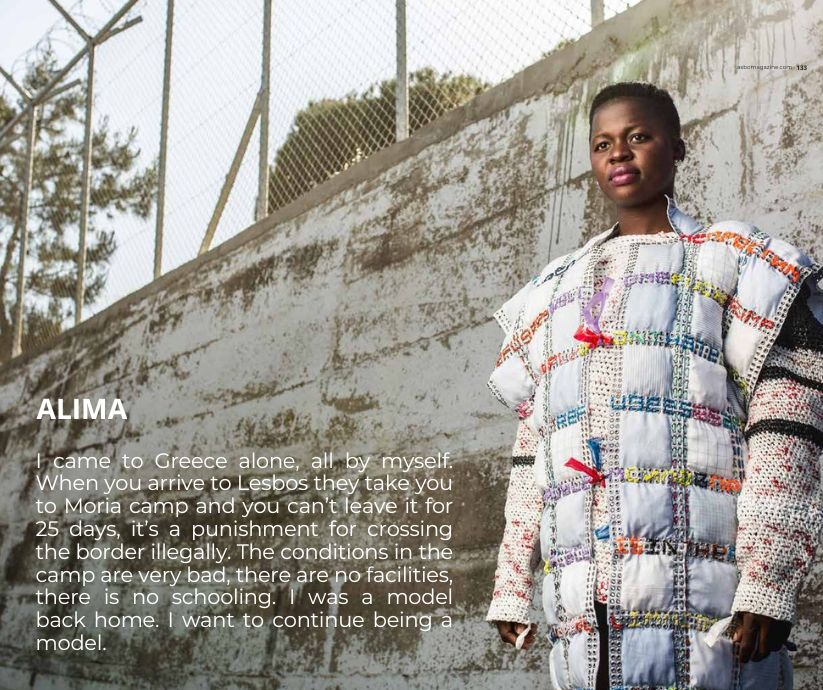
Recent political events have shown that there is a tie between these two ways. British people have chosen Brexit, with 52% of votes. Trump won the US election, but lost the popular vote, which means that more than a half of US citizens voted against him and his policies. At this point, people have chosen their own
safety, and racial and gender stereotypes, over equality and generosity. But there is hope that
it will change. Change can be made by small steps towards embracing the most human trait:
empathy.
Refugees experience terrible tribulations during their journey to safer places: lack of food, clean water and medication, unsafe boats that smugglers use to transfer them regardless of weather conditions, and the absence of fundamental living conditions are among many of these. Another problem refugees face is
de-identification. Having to leave behind their homes and all that they obtained throughout
their lives, they leave behind their identities. People who used to be doctors, accountants
and bakers have become deprived refugees. In camps, they are given basic clothing and shelter.
Everyone’s the same. They are fed in refugee camps – all with the same food. They are locked
in camps for long periods of time with nothing to do but wait and hope for better times. People
donate their clothes to them, but they are mostly used clothes that nobody else wants anymore.
Many of them don’t have even one personal item that will remind them of home. Having
gone through this nightmare, these people have suffered physically and emotionally, and will
continue to suffer once they are in safer places. I think that this lack of personal things, the
absence of ability to choose for themselves, is a very difficult issue.
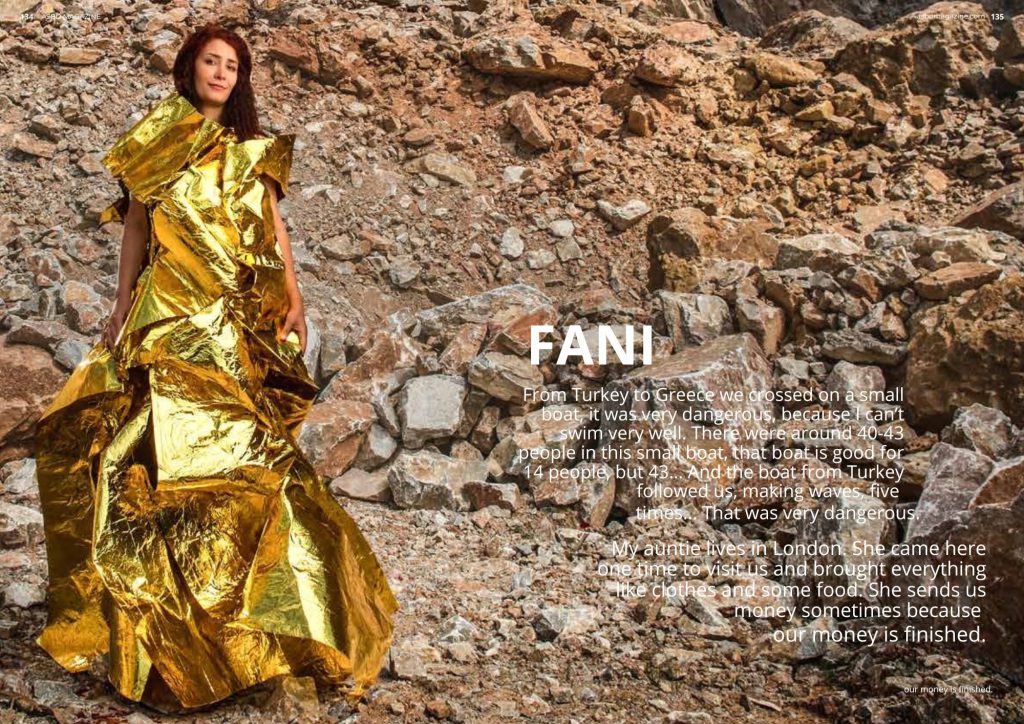
I was extremely moved by the photo-projects by different artists that documented the most important things refugees took when they fled. Some brought their childhood toy; others, a photograph of their family, or just a tiny piece of paper with their mother’s phone number. Many have nothing at all.
In safer countries, people normally go to the store to buy clothes. They will choose what they want to wear, thinking of what they want their clothes to ‘say’. What will suit them better, and what will be most comfortable. Refugees are stripped of the opportunity to choose anything for themselves.
One way to try to solve these issues is to offer refugees something of their own. Giving them their own clothing can offer protection of the body, along with emotional support. This can be done through providing garment pieces as part of a construction kit, for each person can assemble their own garments manually with minimal hand sewing and knitting. Everyone can embroider whatever words they want in
the seams of their clothes. The words will hold the garments together, like they hold together people’s relationships.
There is a dump on Lesbos island in Greece, with copious discarded lifejackets, which refuges wore during their dangerous journey, and tons of plastic. There are also tons of plastic trash. I propose to upcycle
unwanted plastic and lifejackets, recreating them into garments and accessories that can be used or sold
to the people outside the camps.
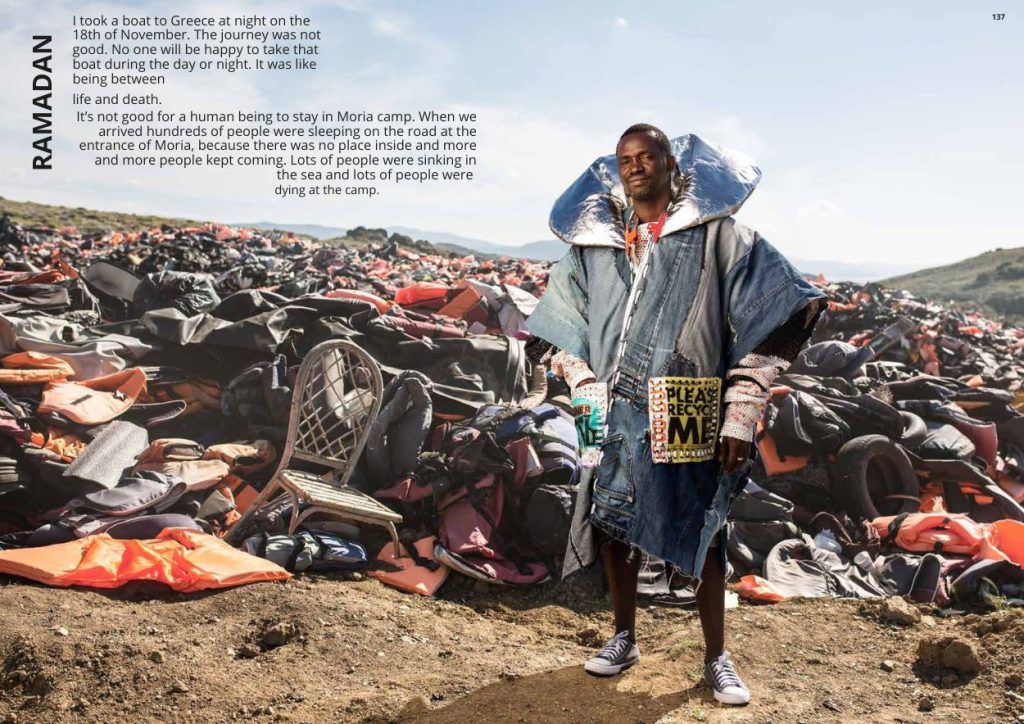
Other materials in the kit will be upcycled garments that people donate to refugees. Currently, people
who want to help by donating their clothes do so to organisations that collect them and take them to
refugees. Another part can be added to this process: the upcycling of clothing into new pieces of garments for the construction kit. There is a place for a designer in this process.
This makes people participate in the well-being of others in a new way. Refugees get something better than just used clothes to cover the body. They get empathy and expression. This is fashion for refugees.
The kit will contain a booklet with instructions on how to create garments step-by-step, with the necessary materials and tools. The kit container can also be reused as a baby crib - something in high
demand at camps.
Information websites for volunteers are full of notices from different camp’s administration centres
looking for people willing to organize different kinds of refugee workshops. Wanted are people who can teach English, IT or Art. This shows that there is also a need to fill in the time of people in camps with something decent. Something that can build new knowledge, skills or offer healing.
For people in difficult situations, the compassion, emotional support and well-wishing of other people is
extremely important. This is what helps people to find new strength to move on. Helping other people in
different ways is also emotionally rewarding. As a result, both sides become happy.
